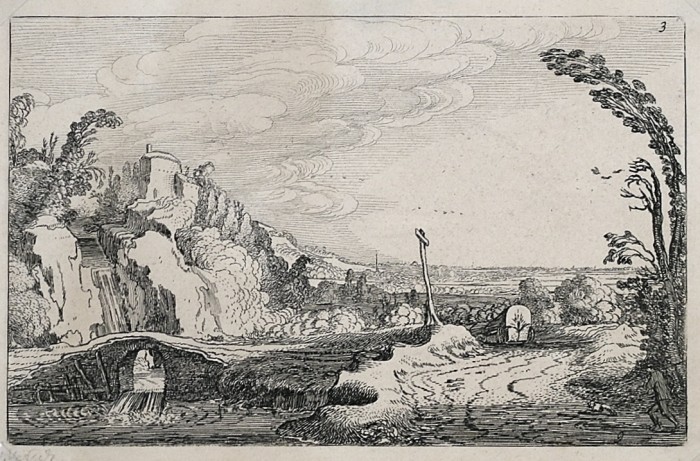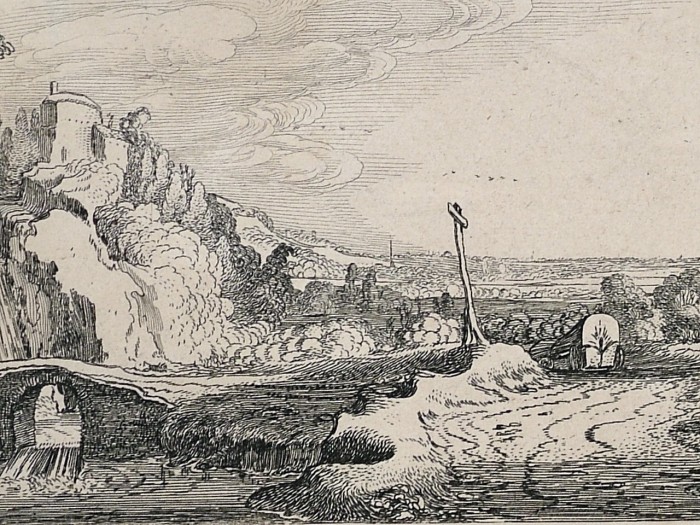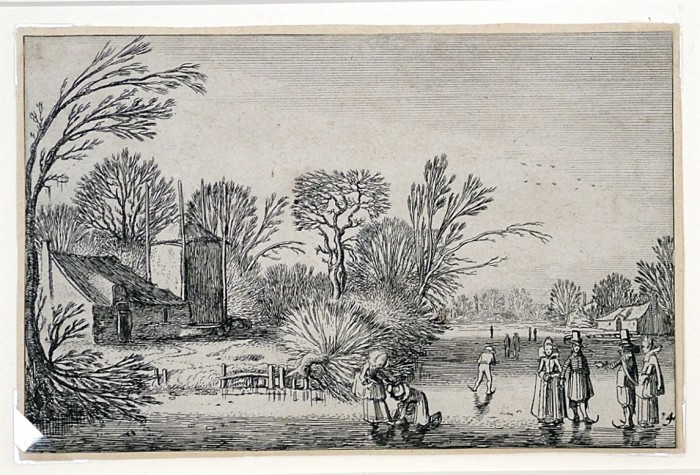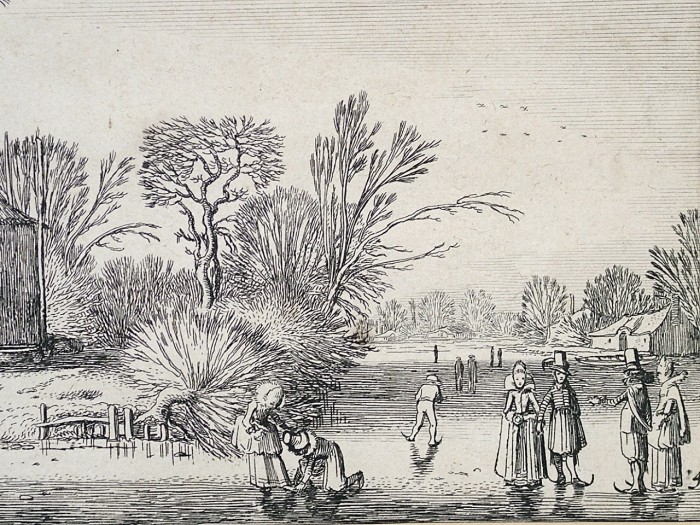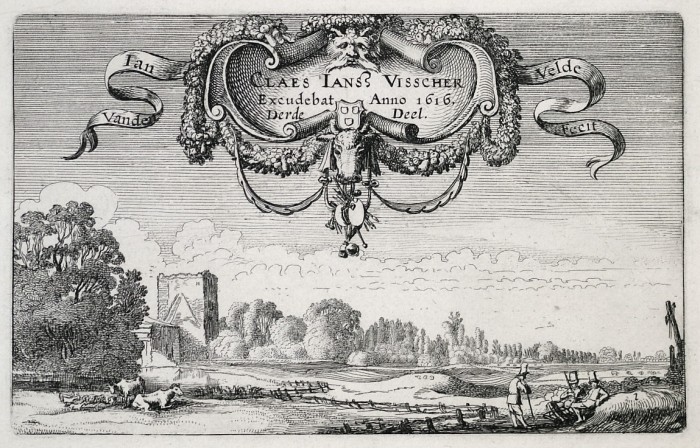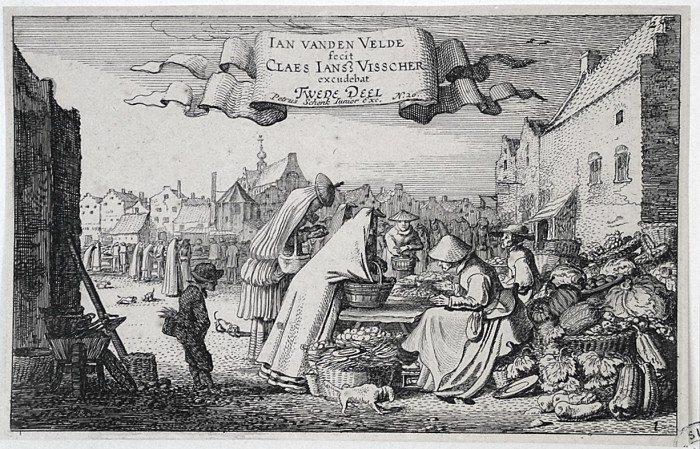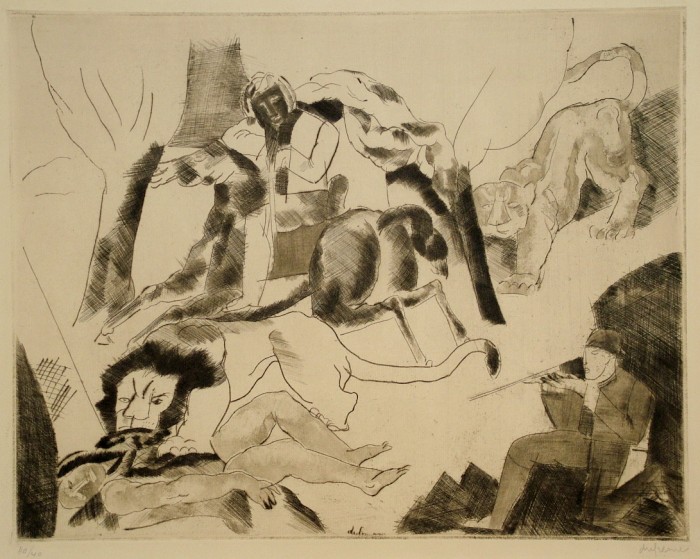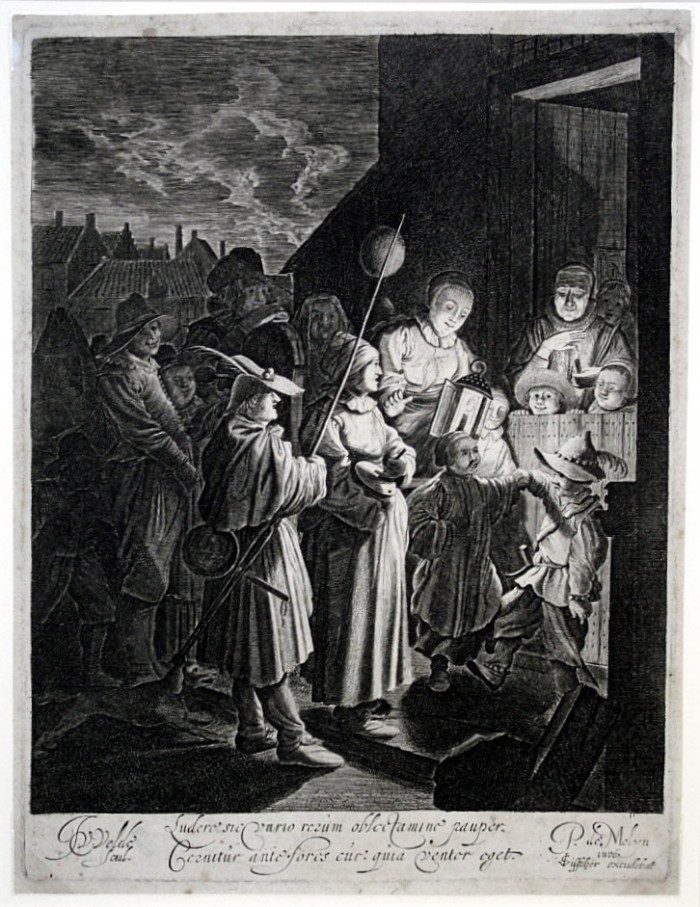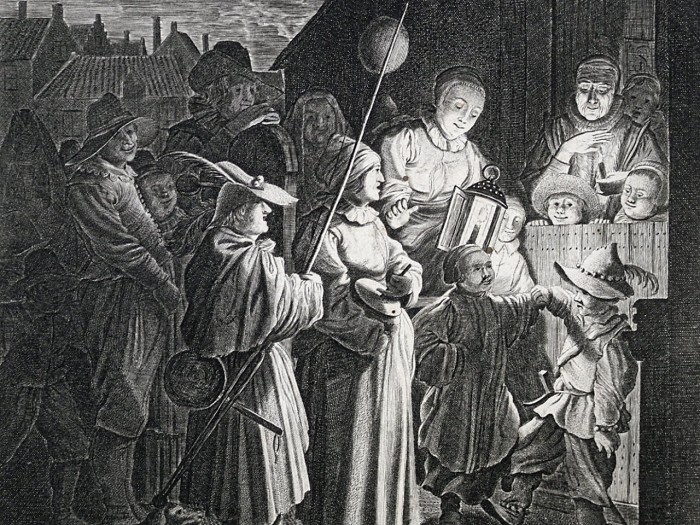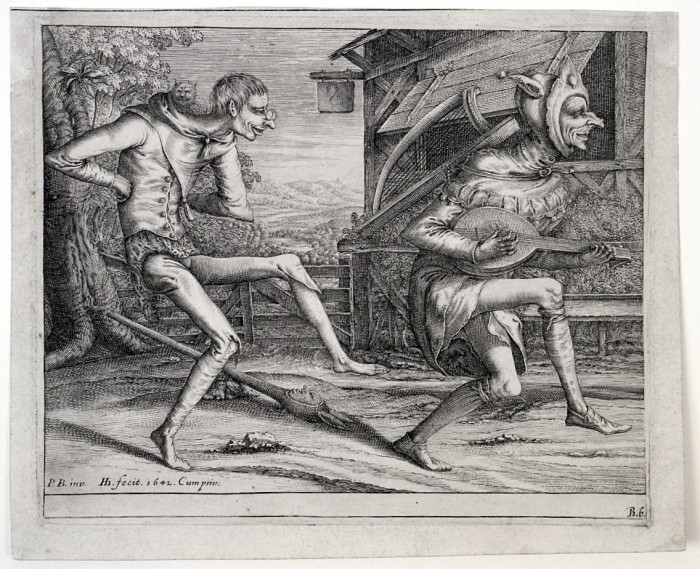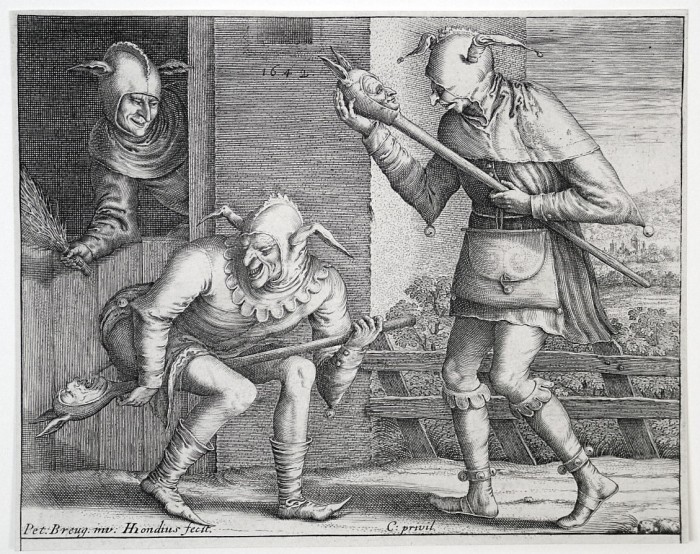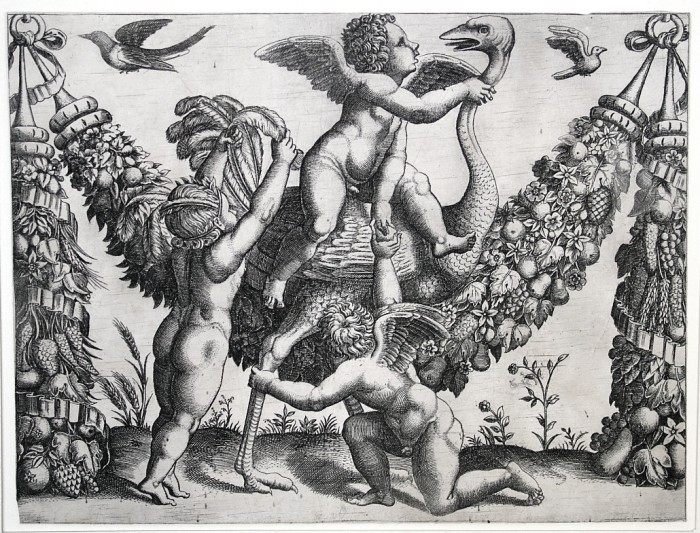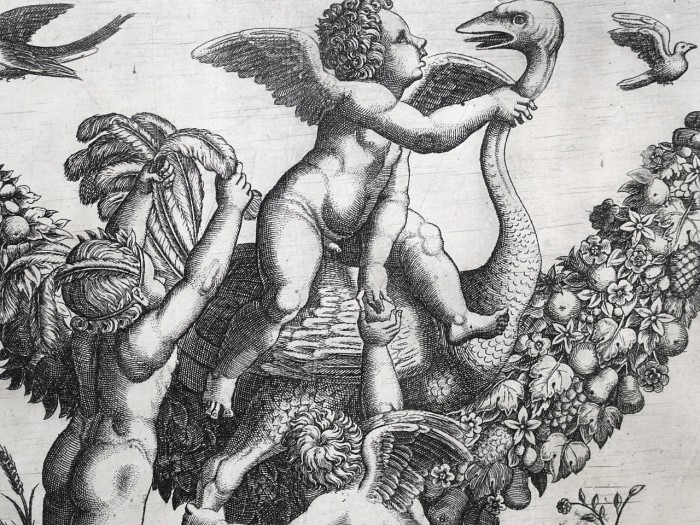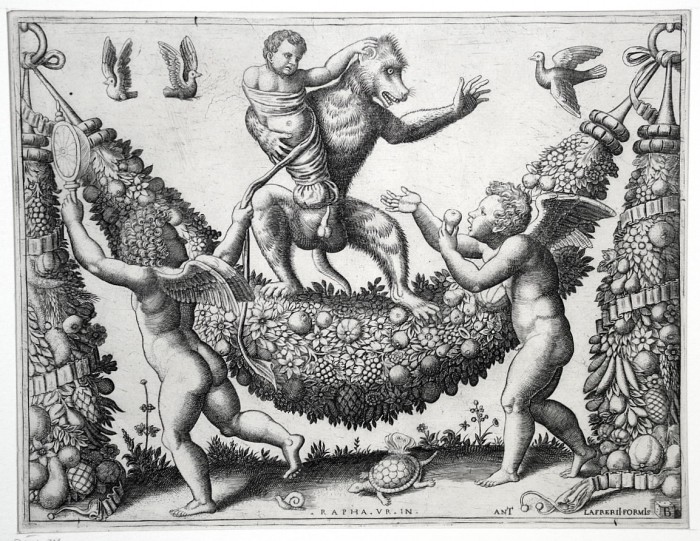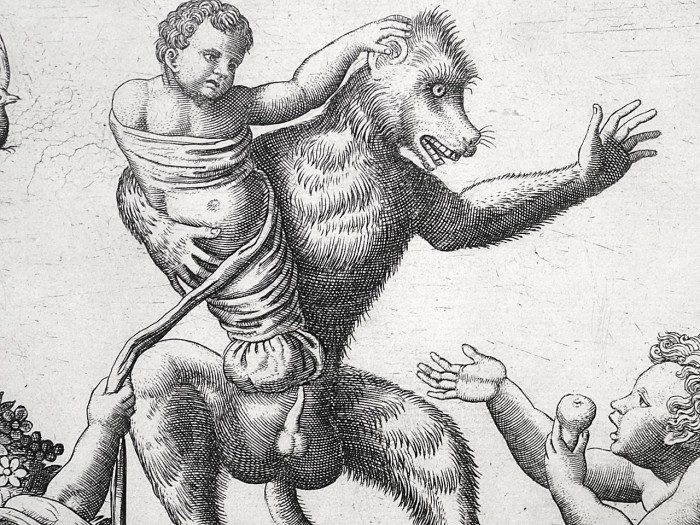Cascade
Tuesday, September 28th, 2010Jan van de Velde (1593-1641), Cascade, etching, 1616. References: Hollstein 264, first state (of 2), Francken and Van der Kellen 303, third state (of four). Plate number 9 from the series Landscapes: Third Part. In generally good condition apart from light stain over left half of image, printed on old laid paper with an elaborate shield watermark, with margins, 4 3/4 x 7 1/2 inches, the sheet 5 1/8 x 8 1/4 inches.
A very good impression.
A cascade flows down the hillside and under a bridge at the left; at the right a covered wagon rolls around a bend in the road. Etchings such as this were made at about the time of Rembrandt’s birth, and later served as models for some of his etchings of the Dutch landscape.
